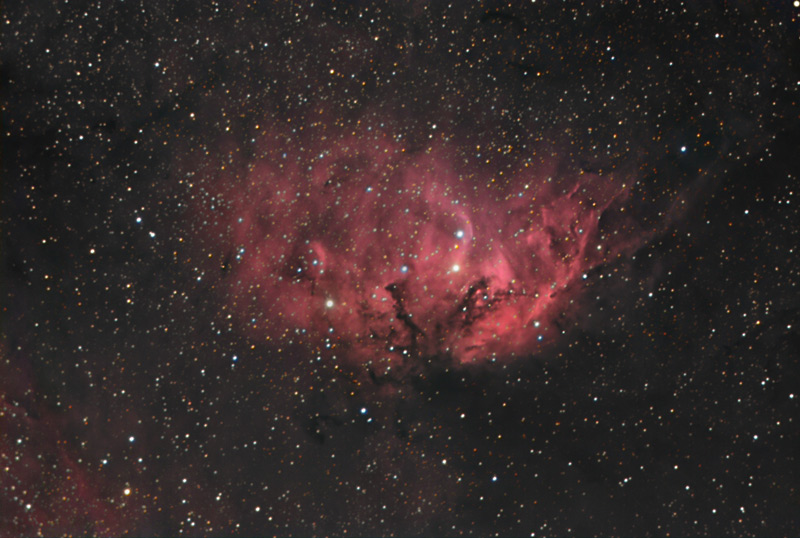
Photographer:
Rod Pommier
Location of Photo:
Pommier Observatory, Portland, OR, USA
Date/Time of photo:
2013-07-02 through 2013-07-05
Equipment:
Telescope/Mount: Celestron Compustar C14 with Astrophysics 0.75x focal reducer (f/8.3) Camera: SBIG STL 11000M with Baader Planetarium H-alpha, R, G, and B filters. Exposures: H-alpha:R:G:B=510:90:90:90 minutes=13 hours total exposure.
Description:
. Sharpless 2-101 is an emission nebula known as the Tulip Nebula because it bears a resemblance to the flower in images. It lies 6,000 light-years from Earth in the constellation Cygnus, the swan. It is the vicinity of well known nebulae such as the Crescent Nebula and the emission and dark nebulae around Sadr, or gamma Cygni. The bright star in the very upper right corner marks the location of Cygnus X-1, one of the first black hole candidates. The bright star is actually HDE 226868 a blue supergiant variable that is Cygnus X-1's companion star. The star betrays the existence of the black hole because it is being whipped around an object every 5.6 days at a radius of 0.2 au. This indicates a mass of 14.6 solar masses in a compact area that can only be explained as a black hole. The black hole is also consuming the companion star. Material being siphoned off the companion star and accelerated as it whirls around the accretion disk is a source of Cyngus X-1's intense X-ray emissions characteristic of a black hole consuming matter
 0
0
Comments
You must be logged in to post a comment.